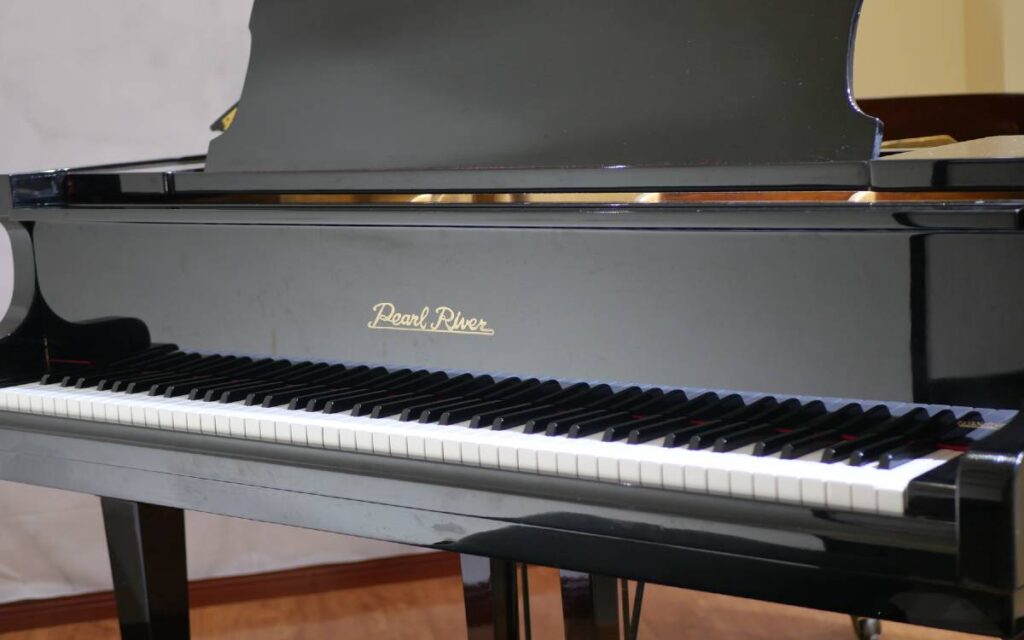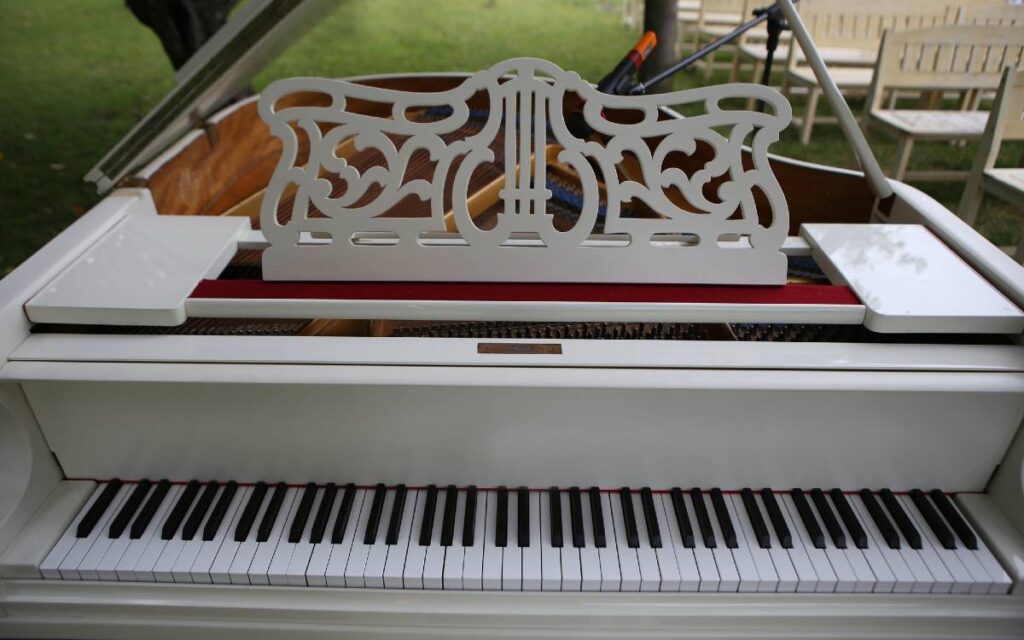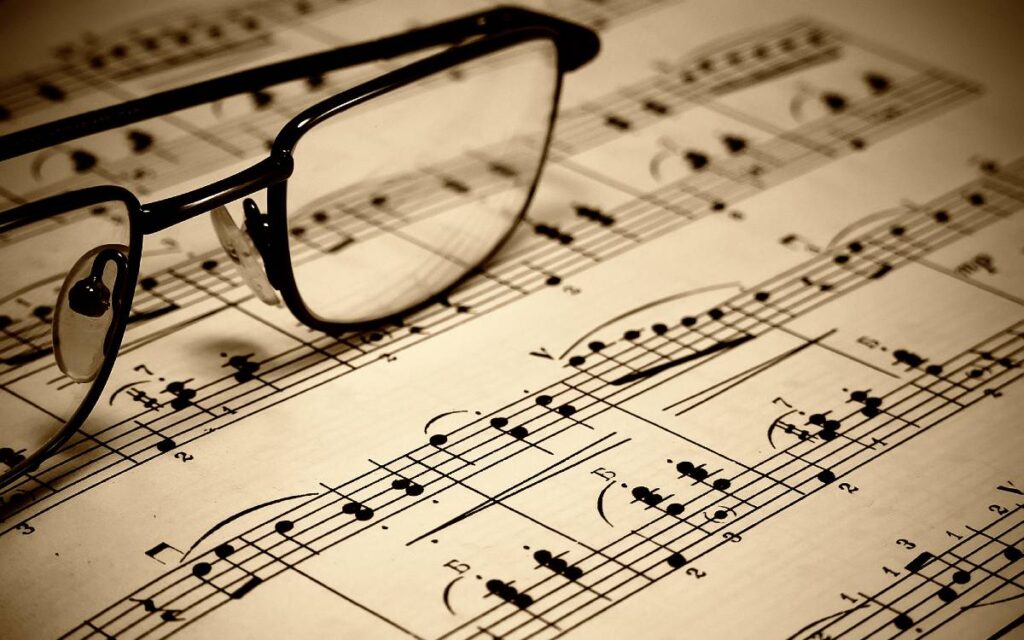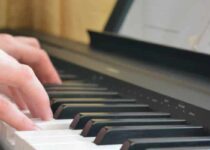So you or your child want to take up playing piano. There are certainly a ton of benefits to playing piano – you’ll gain a grasp of music fundamentals, learn to read music, and develop skills that can help with learning to play other instruments.
But are there downsides to playing piano? Is playing the piano bad for you? What are the pros, cons, and disadvantages of playing piano?
There are disadvantages to just about everything, and playing the piano has its fair share of them. It’s one of the most inaccessible and expensive instruments out there, they need ongoing maintenance, learning to play can be a big commitment, piano lessons can be quite costly, and you can’t exactly throw a baby grand in the back seat of your car.
While there are certainly some disadvantages and challenges to learning piano, overcoming these disadvantages is worth it. Playing piano can be extremely rewarding and fun if you stick with it, and can be an especially valuable instrument for kids and students to learn as a foundation of their musical education.
So, what are some of the biggest disadvantages of playing piano, and what are a few ways you can tackle these challenges?
Post Contents
The Top Disadvantages of Learning the Piano
A few of the biggest challenges that people might face when learning to play the piano include:
1. Buying One Is Expensive

One of the biggest challenges that comes with learning to play the piano is that buying a piano is expensive. A brand new grand piano can cost tens of thousands of dollars. Even a used upright can run a few thousand dollars.
It is true that you need a piano to practice on. However, this does not necessarily mean that you need to buy one. For example, you may want to contact local schools in the area. Often, if you take a piano class at a community college, you may gain access to pianos you can use.
Of course, this means that you need to drive somewhere just to play the piano. There are ways to find an inexpensive, used instrument online. Check out a local piano store, Facebook Marketplace, or online forum and websites like Piano Adoption to see what’s available in your area.
You can also look into buying a good digital piano. These days you can find digital pianos that mimic the action of real piano keys, and will help get you started on the right foot until you can get your own acoustic piano.
2. Piano Playing is Noisy
Things can get loud when you’re playing the piano- meaning other people in the home might get annoyed with your piano playing. And if you feel that inspiration to play strike late at night – well, you’re SOL. But here are ways to deal with the noise this instrument makes.
First, if possible, put the piano in a room with a door, so you can close it when you’re playing. You can also consider soundproofing the room to keep from disturbing others in the house, or your neighbors (if you live in an apartment building), while playing the piano.
Finally, if this is really going to be a problem, you may want to buy a digital piano and a set of headphones for silent practice. That way, you can bang away on the keys all you want without making any noise at all.
3. They’re Less Common in School
Students in school have the option of learning to play a variety of musical instruments in orchestra or band class. Violin, cello, trumpet, clarinet, percussion, and more, are all typically available.
But most schools don’t teach piano, meaning students who want to play the piano must seek out a piano teacher on their own. Since this isn’t part of the regular school curriculum, having kids that are learning piano often involves added expense and effort outside of school.
4. Piano Lessons Are Expensive
If you want to learn to play the piano properly, there are few better ways than taking piano lessons. But piano lessons are not cheap, and because of this they can prevent a lot of people from being able to afford playing the piano.
Fortunately, there are ways to deal with this. You may want to start by taking a look at a YouTube video to learn more about how to maximize your practice and lesson time. You can start by taking an online course about playing piano, rather than jumping straight into in-person lessons.
Remember that piano lessons are going to make you a better pianist. But if piano lessons are unaffordable, you might be able to talk to your piano teacher to negotiate a discounted rate for a few lessons. That way, you can see if this is actually worth it for you before you fully commit to playing piano. You might also want to consider taking group piano lessons with other people to help you reduce the cost.
Other ways to reduce the cost of piano lessons is to look into online programs or video lessons, which are often a cheaper method of learning to play the piano.
5. They’re Big and Heavy

When you want to play the piano elsewhere, what you are going to do? A smaller instrument, such as a guitar or a ukulele, is much more portable. You can just bring it with you to practice on the road.
But you can’t take an acoustic piano around with you. And since consistent practice is important with any instrument, you might get rusty if you go out of town and can’t practice for a while.
And what if you decide you want your piano in a different room? Or you move, and want to take it with you? Or even if you decide you don’t like playing and want to get rid of your piano? A piano is big and bulky; it’s made of wood and cast iron and weighs hundreds of pounds. Things like a simple move across town could cost you hundreds of dollars paying for piano movers and tuning fees. Whereas you can just throw something like a guitar in the trunk of your car.
The exception to this here is if you decide to play a digital piano, or even a portable stage keyboard. While digital pianos are not the same as acoustics, they are much more easily portable.
Furthermore, you might be able to find a piano somewhere even if you travel. If you want to keep practicing on the road, check out a local school.
6. Tuning and Maintenance are Expensive
One of the biggest disadvantages of playing piano is the cost of tuning and maintenance. Because a wooden instrument like the piano is affected by humidity and temperature changes, you need to tune it periodically.
Most experts recommend having a tuning about twice per year, but many people do one yearly tuning (however, if you’re in a particularly harsh locale, you may need to have your instrument tuned several times per year). And at around $100-$150 a pop, this cost can really add up – much more so than that other instrument that you can tune yourself.
And that doesn’t include additional maintenance costs. A piano is a complicated instrument, and you can’t really do your own repairs. If you have sticking keys, or rattling sounds, or your pedals aren’t working properly, you’ll need to have a technician come out to fix the problem.
These are factors that increase cost of ownership over time. But again, these are issues that you can solve by going with a digital piano as a beginning player.
A digital keyboard doesn’t need to be tuned, and maintenance is minimal to nonexistent. Digital pianos do have a lot of advantages for beginning players and gigging musicians, but at the same time there’s nothing quite like playing a real piano.
7. Playing the Piano Involves Reading Music

With instruments such as guitar or ukulele, it’s common to go about learning to play entirely through chord diagrams and tab, which is super easy to read and understand. However, playing the piano almost always involves learning to read sheet music.
While this is a great skill to have that will set you up for success on your musical journey, reading sheet music is another barrier to just getting started playing. You need to learn which notes are which, how to decipher treble clef and bass clef, and memorize their positioning.
Again, developing these skills is important for any musician. But it also adds to the initial curve of learning to play. Not everyone has the motivation to stick it out past these stages, and would rather just get started playing songs, like you can on guitar.
8. Repetitive Hand Movements Can Lead to Injury
Playing the piano involves frequent repetitive hand movements, similar to office workers typing at a keyboard all day long. This can lead to a variety of repetitive stress injuries if you don’t take the right precautions.
Learning proper technique is incredibly important, as is making sure to warm up and stretch your hands and fingers before playing the piano. Otherwise, you may find yourself suffering from hand cramps, or even developing carpal tunnel syndrome from playing piano.
9. Playing the Piano is a Big Commitment
Between the lessons, and the initial cost, and the space the instrument takes up, learning to play the piano is a massive commitment. It also requires a huge time investment on your part, which many students may not be prepared for.
You will need to put in regular, consistent effort to make progress, and it can take several years of playing the piano before you achieve significant results. This can feel discouraging, but it’s important to stay committed through the ups and downs. The end game is very worth it.
BUT – The Joy of Playing the Piano is Worth It

After going through all of the disadvantages of playing piano, you may be feeling discouraged. While there are certainly some cons to learning the piano, there are a whole lot of pros to piano playing that may make everything worth it.
Yes, picking up the ukulele is cheaper, and you’ll be playing songs much faster. But the piano carries some weight to it that just doesn’t exist with other instruments. Just about everyone plays the guitar. Much fewer people can say they play the piano. And being one of those people is a quick way to impress others with your musical abilities, and stand out from the crowd.
Playing the piano also offers a ton of advantages for establishing the basic skills you’ll need to be a musician. Because of the way a piano keyboard is laid out, it becomes extremely easy to visualize the connections between notes when you play piano.
This means you can quickly learn the concepts at the heart of music theory, which are much harder to connect to when you’re looking at a fretboard. Once you learn this, you can translate this knowledge to any instrument you want to play.
But most of all, it’s plain FUN to play the piano. There just aren’t any other musical instruments that can do as much at the same time. And once you get your fingers dancing over those keys, you’ll be having a rocking good time. And that’s what this whole musical journey is all about.







